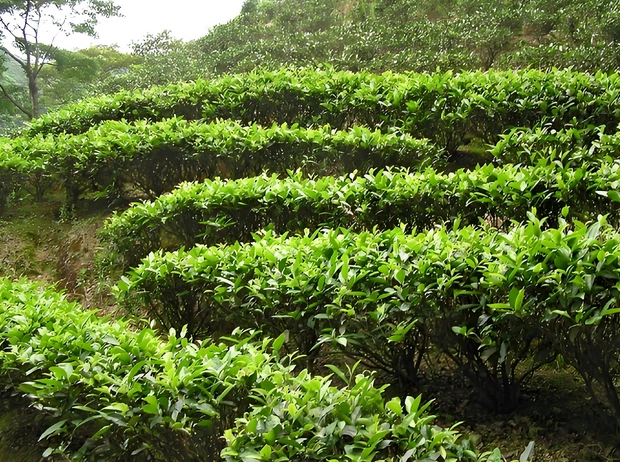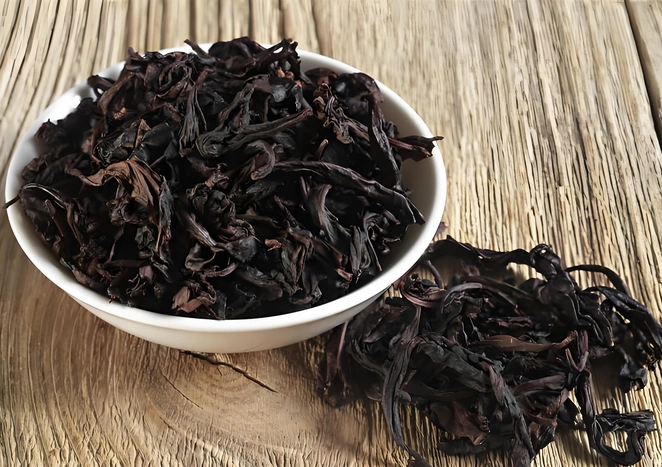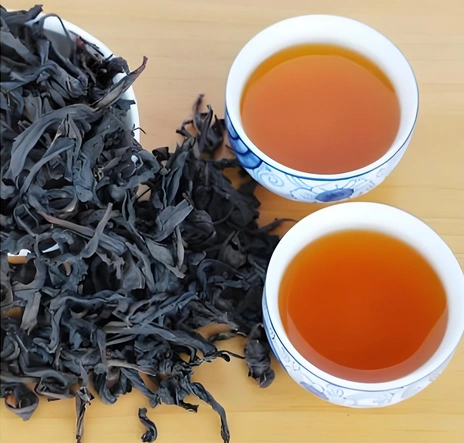Best oolong tea captivates the senses with its kaleidoscope of aromas—from delicate floral whispers to toasty, caramel-rich depths. Imagine steam rising from your cup, carrying hints of orchid, honey, and wet stone, then enveloping you in a warm, soothing embrace. Whether you seek a moment of oolong tea for stress relief after a hectic day or a gentle oolong tea after meals to ease digestion, oolong stands unrivaled in its versatility and charm. In this guide, we’ll unveil what makes the best oolong tea truly exceptional, explore five top varietals—featuring legendary names like Wuyi rock oolong tea, Phoenix Dan Cong oolong tea, and Anxi Tieguanyin tea—and share expert tips on choosing, brewing, and savoring these leaf-to-cup masterpieces.
What Makes the Best Oolong Tea?
Defining the best oolong tea begins with understanding its unique semi-oxidation process, which falls between green and black teas. Key factors include:
- Origin & Terroir: Mountain soil, elevation, humidity, and microclimate deeply influence flavor.
- Cultivar & Harvest Season: Early spring buds often yield peak fragrance; specific cultivars carry signature aromas.
- Processing & Roast Level: From light pan-fired styles to deep charcoal roasts, each technique shapes taste, mouthfeel, and aroma complexity.
When these elements harmonize—field to factory in perfect balance—the result is the best oolong tea: a living tapestry of nature’s bounty and human craftsmanship.

Our Top 5 Best Oolong Tea Varieties
Wuyi Rock Oolong Tea
Wuyi rock oolong tea, grown on sheer granite cliffs, is prized for its “rock rhyme” (yan yun): a savory-mineral backbone wrapped in roasted chestnut and subtle orchid sweetness. Close your eyes as you sip and taste the cool echo of wet stone alongside a gentle, smoky finish—an experience both grounding and transcendent.
Phoenix Dan Cong Oolong Tea
From Guangdong’s Phoenix Mountain comes Phoenix Dan Cong oolong tea, or “single-bush oolong.” Each mother tree produces a distinct “xiang” or fragrance: Mi Lan Xiang brings honeyed orchid sweetness; Ya Shi Xiang (Duck Shit Aroma) surprises with savory-mineral boldness. Dan Cong’s dramatic aromatics make it a top contender for the best oolong tea.
Anxi Tieguanyin Tea
Celebrated as the “Iron Goddess of Mercy,” Anxi Tieguanyin tea enchants with creamy orchid notes and a silky mouthfeel. Its moderate 30–40% oxidation and light roast preserve floral elegance, offering a refined, comforting cup that gently unfurls on the palate.
Taiwanese High-Mountain Oolong
High-elevation oolongs from Taiwan—such as Alishan and Shan Lin Xi—grow above 1,000 meters in misty peaks. These teas deliver pristine floral top notes and a natural honeyed sweetness, reflecting the clean mountain air and nutrient-rich soil. Their vibrant clarity earns them a place among the world’s best oolong tea selections.
Other Noteworthy Styles
- Dark-Roast Taiwanese Oolong: Deep caramel, cacao, and spice notes.
- Guangdong Dan Cong (Non-Phoenix): Exotic fruit aromas like lychee and mango.
- Chinese Garden Oolongs: Lighter, greener teas perfect for daily sipping.
Flavor Profiles & Tasting Notes
The best oolong tea reveals a symphony of flavors:
- Floral: Jasmine, orchid, gardenia.
- Fruity: Peach, apricot, lychee.
- Creamy: Milk-oil textures that coat the tongue.
- Roasted: Chestnut, honeyed caramel, cacao nibs.
- Mineral: Wet stone, river slate, sea spray.
Factors like oxidation level and roast degree sculpt these profiles: a lightly oxidized Anxi Tieguanyin sings with flowers; a heavily roasted Wuyi oolong resonates with deep, embered warmth.

Health Benefits of the Best Oolong Tea
Antioxidant Power & Metabolism Boost
Oolong tea bursts with polyphenols and catechins that neutralize free radicals. Regular sipping can gently elevate metabolism, supporting healthy weight management and glowing skin.
Stress Relief & Mental Clarity
The amino acid L-theanine in oolong fosters calm alertness. A warm cup of oolong tea for stress relief melts away tension, sharpening focus and inviting mindful presence.
Digestion & After-Meal Support
Enjoy a cup of oolong tea after meals to encourage digestion. Mild tannins stimulate bile flow, ease occasional bloating, and promote nutrient absorption—making oolong an ideal post-meal companion.
How to Choose & Store Your Best Oolong Tea
- Inspect Dry Leaves: Tightly rolled, whole leaves with vibrant coloration signal quality.
- Aroma Test: Dry tea should exude a powerful signature scent—orchid, honey, or charcoal, depending on style.
- Origin Labels & Certifications: Look for regional seals (Fujian, Guangdong, Taiwan) and cultivar names.
- Harvest & Grade: Spring harvests and higher grades (e.g., “premium,” “select”) often offer peak aroma.
- Proper Storage: Seal in an airtight, opaque container in a cool, dry place, away from moisture and strong odors to maintain peak freshness.
Brewing the Best Oolong Tea
Ideal Water Temperatures & Steep Times
| Tea Style | Temp (°C) | Western Steep | Gongfu Steep |
|---|---|---|---|
| Anxi Tieguanyin Tea | 90–95 | 3 min | 5–10 s × 6–8 infusions |
| Wuyi Rock Oolong Tea | 95–100 | 3–4 min | 10–15 s × 8–10 infusions |
| Phoenix Dan Cong Oolong Tea | 90–95 | 3–4 min | 5–10 s × 6–8 infusions |
| Taiwanese High-Mountain Oolong | 90–95 | 3–4 min | 5–10 s × 8–10 infusions |
| Dark-Roast Taiwanese Oolong | 95–100 | 4–5 min | 15–20 s × 8–10 infusions |
Gongfu-Style vs Western-Style
- Gongfu-Style: High leaf-to-water ratio in a small gaiwan. Multiple short infusions reveal evolving depth and aroma.
- Western-Style: One teaspoon per cup, single longer steep—a convenient daily method.
Multi-Infusion Tips
- Increase steep time by 5–10 seconds per infusion.
- Observe flavor shifts: initial florals fade to fruit, then roast, then mineral echoes.
- Quality oolongs can yield 6–10 flavorful steeps.

🔗 For more tea brewing methods, check out the YouTube video explaining the brewing methods.
Pairings & Creative Oolong Tea Recipes
- Savory Pairings: Steamed dumplings, light stir-fries, mild cheeses.
- Sweet Pairings: Almond biscotti, honey cake, fruit tarts.
- Cold-Brew Oolong: 10 g leaf per liter cold water, steep 8–12 hours, strain, serve over ice with mint or citrus.
- Tea Blends: Mix 1:1 with Pu Erh tea for a fusion of aged smoothness and rock-tea depth, or blend with green tea for brightness.
FAQs About Best Oolong Tea
- Which oolong tea is best for beginners?
Start with a lightly oxidized Anxi Tieguanyin or a floral Taiwanese high-mountain oolong. - How many steeps can I get?
Quality oolongs yield 6–10 infusions, each revealing new nuances. - Is oolong tea caffeinated?
Yes—moderate caffeine provides gentle alertness without jitters.
Conclusion: Discover Your Best Oolong Tea
From the mineral echoes of Wuyi rock oolong tea to the single-bush marvels of Phoenix Dan Cong oolong tea and the creamy orchid grace of Anxi Tieguanyin tea, the world of oolong tea spans a dazzling range of flavors and experiences. By selecting the best oolong tea—rooted in terroir, processing, and craftsmanship—and mastering brewing techniques, you unlock a daily ritual of flavor, calm, and well-being. Embrace your own tasting adventure and let each cup of oolong tea guide you toward new heights of sensory delight and holistic wellness.



